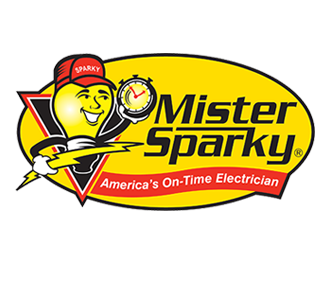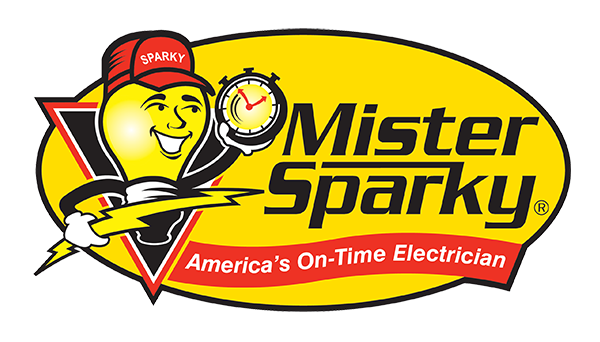13 Jan Whole-Home Surge Protection
Whole-Home Surge Protection is More Important Than Ever Before
Today, homes are more in need of whole-home surge protection than ever before. With the increasing use of technology and electronics, 80 percent of the electrical surges in a home are generated by people. Generators and appliances such as air conditioning units and washing machines introduce small surges into a home’s electrical lines. These surges build up over the years, degrading the performance of electronics and harming the electrical systems in your home.
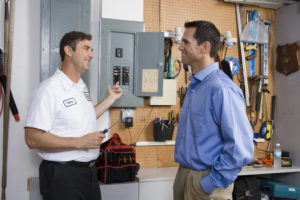 Whole-home surge protection can be built into your home’s breaker panel. Appliances send power surges through the electrical lines to the breaker panel. A whole-home surge protection system can shunt most of the impact to protect everything else in the home.
Whole-home surge protection can be built into your home’s breaker panel. Appliances send power surges through the electrical lines to the breaker panel. A whole-home surge protection system can shunt most of the impact to protect everything else in the home.
Many homeowners find themselves regularly swapping plugs or using devices like a power strip or surge protector. While these can work in many situations, many make the mistake of relying on surge protectors power strip too much. Every year, thousands of home fires result from surge protectors, power strips, and electrical cords.
At Mister Sparky, we don’t want to see you caught up in an electrical emergency, so we’ve compiled a short list of surge protector safety tips:
Surge Protection Do’s and Don’ts
- Do only use power strips for light-load appliances (including computers, lamps, clocks).
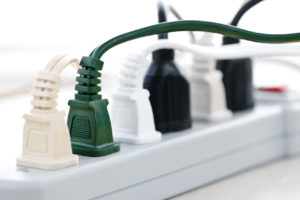
- Do use surge protectors or power strips that have an internal circuit breaker. These units will trip the breaker if the power strip is over loaded or shorted to prevent overheating.
- Do use power strips sparingly. They aren’t designed to maintain a load for extended periods of time and can overheat if used too frequently.
- Do use surge protectors or power strips that are UL (Underwriters Laboratory) or ETL (Electrical Testing Laboratories) approved. The UL or ETL label must never be removed from the unit. On the underside of the casing, there should be the manufacturer’s name and the name of the testing lab where the unit was tested.
- Do visually inspect all surge protectors or power strips on a regular basis to ensure that they are not damaged or showing signs of degradation. During the visual inspection, ensure that the plug is fully engaged in their respective outlets.
- Do unplug the surge protector or plug strip when the unit is not in use.
- Don’t ever plug a surge protector or power strip into an existing surge protector or power strip. This practice is called “daisy chaining” or “piggy backing” and can lead to serious electrical problems.
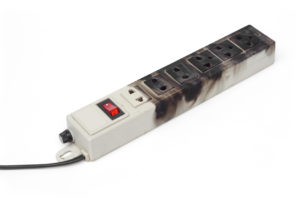 Don’t use surge protectors or power strips in moist areas. No kitchens, no utility rooms, no patios, and definitely no basements.
Don’t use surge protectors or power strips in moist areas. No kitchens, no utility rooms, no patios, and definitely no basements.- Don’t continue to use a surge protector or power strip if it feels hot. Remove and replace the unit.
- Don’t cover a surge protector or power strip. Covering can smother the power strip and provide ample flammable material in the event of failure.
- Don’t locate a surge protector or power strip in any area where the unit would be covered with carpet, furniture, or any other item that will limit or prevent air circulation.
- Don’t staple, tack or nail a surge protector or power strip to anything. This can harm the cords and increase the risk of electrical fires.
- Don’t use surge protectors, power strips, or extension cords as a substitute for permanent wiring.
- Don’t use surge protectors or power strips that have a cord longer than 6 feet in length.
- Don’t plug medical equipment into a surge protector or power strip unless it is approved for this purpose.
For more information on electrical safety and whole-home surge protection or to schedule an installation, contact Mister Sparky today!
Mister Sparky Electrician Tulsa, America’s On-Time Electrician in Broken Arrow, Jenks, Bixby, Sapulpa and Claremore services the Tulsa metro area with a team of licensed electricians. In addition to emergency electrical repairs, some of the electrician services provided by the company include: electrical outlet/switch repair, ceiling fan installation, lighting installation, residential wiring repair, landscape lighting installation and home electrical inspections. Call us today at (918) 200-9900 to schedule an appointment!
